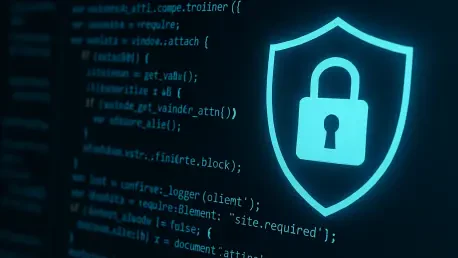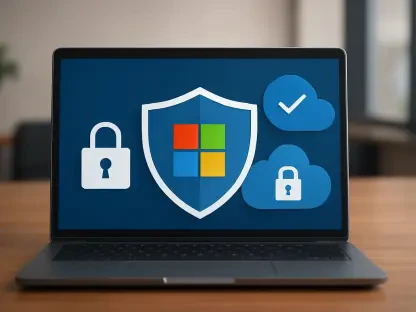In a world where technology evolves at a breakneck pace, the persistence of fundamental security flaws in software remains a glaring concern, as vividly demonstrated by the latest Pwn2Own hacking competition held in Ireland. This annual event, orchestrated by Trend Micro’s Zero Day Initiative (ZDI), gathers elite security researchers from across the globe to expose vulnerabilities in widely used devices and applications. The competition not only showcases the ingenuity of these researchers but also casts a harsh light on the tech industry’s ongoing struggle with secure software development. From stack-based buffer overflows to the buzz surrounding potential zero-click exploits, the event serves as both a battleground for cybersecurity experts and a wake-up call for vendors. It highlights a troubling reality: despite decades of knowledge about preventable bugs, many companies still fail to prioritize security in their development processes, leaving both enterprise and consumer technologies at risk.
Unveiling Vulnerabilities in Modern Tech
Exposing Familiar Flaws in New Devices
The most striking revelation from the Pwn2Own competition is the continued prevalence of well-known vulnerabilities like stack-based and heap-based buffer overflows in cutting-edge technology. Dustin Childs, head of threat awareness at Trend Micro, pointed out that these issues, often considered relics of past coding errors, are still the most exploited categories during the event. Found in everything from printers to Wi-Fi routers and network-attached storage systems, such flaws should be easily detectable and resolved before products hit the market. Yet, their persistence signals a deeper systemic problem within the tech industry—a failure to embed secure coding practices into the development life cycle. This recurring issue affects not just niche gadgets but also mainstream devices that millions rely on daily, underscoring an urgent need for better training and stricter standards to eliminate these preventable errors before they become exploitable threats.
High-Profile Targets Under Scrutiny
Beyond the common bugs, the competition also spotlighted specific high-profile targets that drew significant attention from researchers and vendors alike. Devices such as the Samsung Galaxy and Meta Quest virtual reality headsets became focal points, with attendees eager to see how security experts would approach these complex systems. The diversity of technologies under examination at Pwn2Own illustrates the broad scope of potential vulnerabilities in consumer tech, from smartphones to immersive VR environments. Each successful exploit demonstration not only reveals weaknesses in individual products but also pushes the boundaries of cybersecurity research by showcasing innovative hacking techniques. This aspect of the event serves as a critical reminder that even the most advanced technologies are not immune to flaws, and continuous testing and adaptation are essential to stay ahead of increasingly sophisticated threats in an ever-evolving digital landscape.
Evolving Dynamics and Emerging Threats
A Shift Toward Collaborative Cybersecurity
One of the more encouraging trends observed at Pwn2Own is the transformation of its community dynamic from fierce competition to a more collaborative atmosphere. In earlier years, the event was marked by an adversarial spirit, with participants often focused on outshining one another. However, as Dustin Childs noted, a sense of camaraderie now prevails, with both veteran and novice researchers exchanging knowledge during informal interactions. This shift is partly due to a change in corporate team behavior, as many now prioritize showcasing expertise and fostering collaboration over aggressive rivalry. Such a collegial environment is a boon for the cybersecurity field, as it accelerates the sharing of insights and strategies for vulnerability discovery and mitigation, ultimately strengthening the industry’s collective defense against cyber threats and fostering a culture of mutual growth.
The Specter of Zero-Click Exploits
Adding a layer of intrigue to this year’s competition was the rumor of a zero-click exploit targeting WhatsApp, Meta’s encrypted messaging platform, which could potentially compromise the app without any user interaction. A mysterious researcher, claiming to have developed this exploit, sparked excitement and skepticism alike, with a staggering $1 million prize at stake. Representatives from Meta were among those keenly awaiting confirmation, given the app’s history of being a target for sophisticated attackers. Dustin Childs expressed cautious doubt until a face-to-face meeting could verify the claim, but the mere possibility underscores a chilling reality: zero-interaction exploits represent a growing threat to user privacy and security on widely used platforms. This case highlights the critical importance of proactive security measures to counter emerging risks that could affect millions of users worldwide, pushing vendors to rethink their approach to safeguarding sensitive applications.
Looking Back at Lessons Learned
Reflecting on the outcomes of the Pwn2Own event, it became evident that the tech industry had once again been confronted with its shortcomings in secure software development. The persistent presence of basic vulnerabilities like buffer overflows in modern devices pointed to a failure to learn from past mistakes, despite years of awareness. Meanwhile, the collaborative spirit among researchers offered a glimmer of hope, showing that a united front could drive progress in identifying and addressing flaws. The rumored zero-click exploit for WhatsApp served as a stark warning of the sophisticated dangers lurking in popular applications. Moving forward, the industry must take actionable steps by investing in robust secure coding education, enforcing stricter development standards, and fostering ongoing collaboration between researchers and vendors. Only through such concerted efforts can the gap between technological innovation and security be bridged, ensuring safer digital experiences for all in the years ahead.









